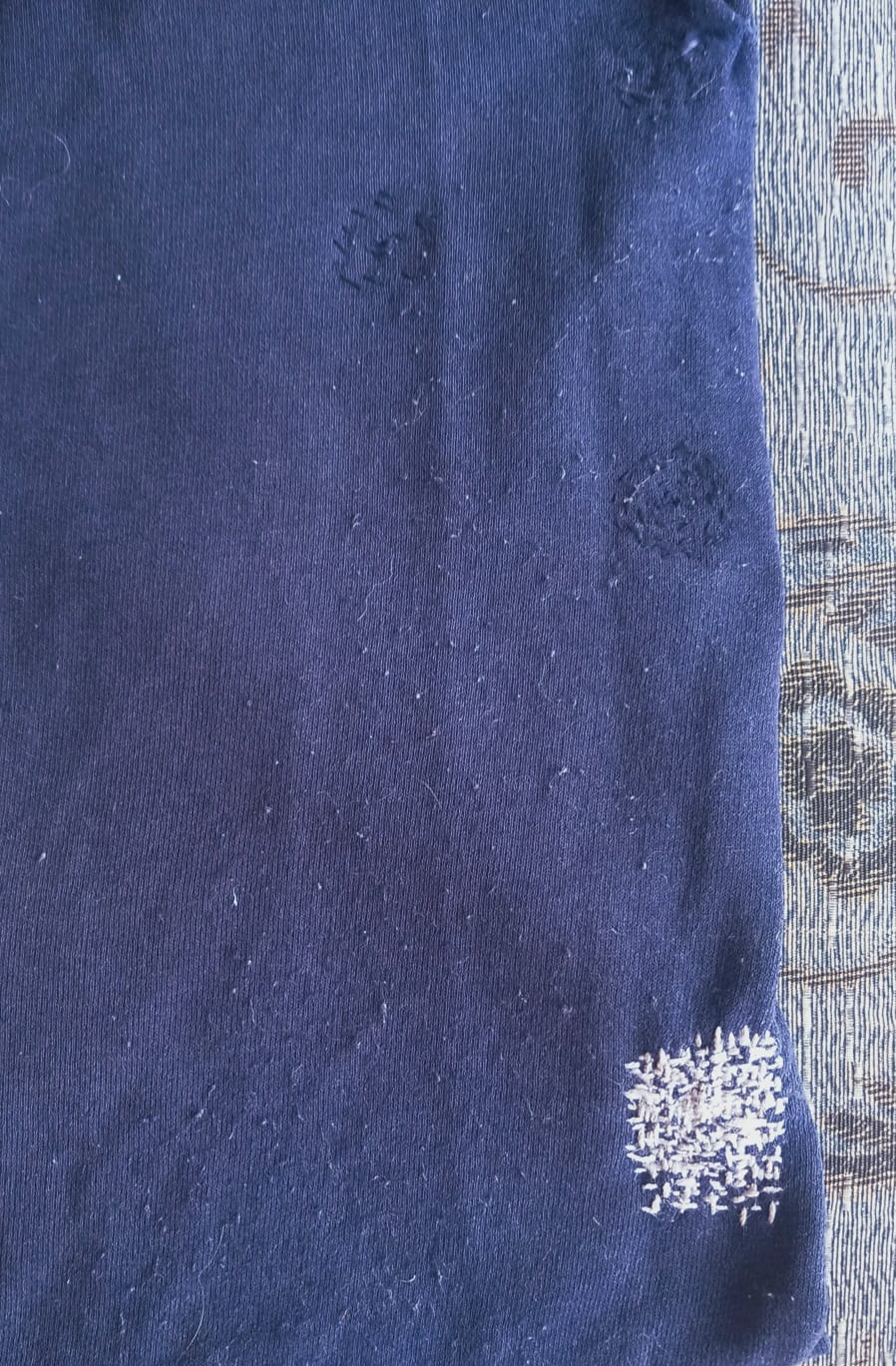-
 @ soma
2025-04-20 17:58:52
@ soma
2025-04-20 17:58:52FABRIC AS TEXTBOOK
Learning to embroider - or to mend - is like studying an ancestral language. Manuals explain the backstitch or sashiko, but fabric never lies: it tears if the tension is weak, and wrinkles if the needle is clumsy.
Theory gives you the alphabet; but practice gives you the syntax of the invisible. How many broken stitches hide behind perfect embroidery? How many mistakes teach us the language of threads?
I. TO MEND IS TO RESIST: THE POLITICAL ACT OF THE NEEDLE
There’s a certain sacred stubbornness in sitting down to mend; like our grandmothers darning our socks until the heel was more patch than original fabric.
And today, in the age of fast fashion, mending is rebellion: a silent "no" to disposability, a resounding "yes" to permanence.
Techniques as Philosophies
-
Japanese sashiko: Visible stitches like proud scars. "What’s broken isn’t hidden—it’s celebrated."

-
Darning: For when pain must be concealed, not erased.

-
Free embroidery: Where repair becomes art and mending, a language.

 Every stitch is a pact: "I care for you because you exist."
Every stitch is a pact: "I care for you because you exist."And isn’t this, too, what mestizaje means? To take the fragmented - fabrics, histories, identities - and reweave them without erasing their origin.
II. EMBROIDERY AS A SELF-TAUGHT MASTER
Learning to embroider is like learning to live: there are no shortcuts. You can read a thousand tutorials, but until you feel the thread resist the needle’s eye or the fabric tense beneath your fingers, knowledge remains abstract.
The Textile Learning Triad
-
Theory that fades (books explain the backstitch, but not how to avoid knots).
-
Practice that stings (fingers get pricked, stitches go crooked).
-
Intuition that blooms (when hands remember the motion on their own).
III. THREADS AND TECHNOLOGY
Malinche, Mesoamerica’s first translator, understood this: some knowledge only transmits through action. We, as 21st-century beings, have a privilege: to blend ancestral tools (needles, threads) with modern ones (YouTube tutorials, digital patterns).
At soma, we explore education beyond canons, and embroidery is the perfect example.
Embroidery teaches us:
-
Discipline (because one loose stitch ruins the design).
-
Creativity (because sometimes you must invent solutions).
-
Legacy (because every thread carries memory).
What are you mending today? A skirt, a habit, a way of learning?
This is the future of education: to dig into the old and hack the new.
IV. INVITATION: STITCHES AND PATIENCE WORKSHOP
This Saturday 26th, at Estudio Malinche, Apaneca - we won’t just teach techniques. We’ll create a collective learning ritual:
-
Bring a torn garment and an empty notebook.
-
Learn sashiko mending (to honor scars) and bookbinding with recycled paper (to chart your path).
-
You’ll leave with ink-stained hands and a heart full of threads.
"Perfection isn’t the goal - persistence is."
Follow us on IG to check out stories & upcoming events: @larutasoma @estudiomalinche
soma #article #mending #workshop #visiblemending #philosophy #resistance #btc #nostr #elsalvador #sashiko #rutadelasflores #apaneca #education #slowfashion #fashion #fastfashion #embroidery #stitching #handmade #diy
-